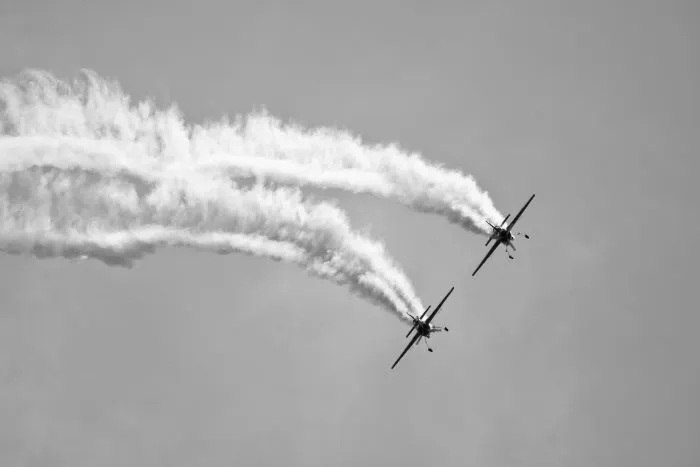
In a fierce aerial battle, India’s Rafale and Sukhoi jets shot down Pakistan’s JF-17s and Mirages during Operation Sindoor(representative image)
Intense Dogfight with Pakistan – In a high-stakes aerial battle, the Indian Air Force (IAF) launched Operation Sindoor on May 6-7, 2025, in retaliation for the April 22 Pahalgam terror attack, which claimed 26 Indian lives. The operation saw Rafale and Sukhoi jets conducting precision strikes on terror camps in Pakistan and Pakistan-occupied Kashmir (PoK), eliminating over 100 terrorists.
Pakistan scrambled its JF-17s, Mirages, and J-10Cs to counter the offensive, leading to an intense dogfight. Reports indicate that India shot down multiple Pakistani aircraft, including JF-17s and an Erieye AWACS reconnaissance plane. The wreckage of these jets was reportedly scattered across PoK, with India set to release satellite images and cockpit footage as proof.
The Intense Dogfight: How India’s Rafales and Sukhois Overpowered Pakistan’s Jets
The aerial battle unfolded at supersonic speeds, with Indian Rafales and Sukhoi Su-30MKIs engaging Pakistani JF-17s and Mirages in a beyond-visual-range (BVR) combat scenario. The IAF’s Meteor and Astra missiles proved decisive, allowing Indian pilots to lock onto enemy aircraft before they could retaliate.
One of the most significant moments came when an Indian Rafale fired a Meteor missile, striking a Pakistani JF-17 mid-air, causing it to explode over PoK. Meanwhile, a Sukhoi Su-30MKI engaged two Pakistani Mirages, successfully downing one with an R-77 missile while forcing the other to retreat.
Pakistan’s AWACS Erieye aircraft, which was providing battlefield surveillance, was also destroyed by a long-range missile strike, crippling Pakistan’s ability to coordinate its air defense.
As the battle intensified, Indian pilots demonstrated superior maneuverability, using electronic warfare tactics to jam Pakistani radar systems. The IAF’s airborne early warning and control (AEW&C) aircraft played a crucial role, providing real-time intelligence that allowed Indian jets to anticipate enemy movements.
India’s Strategic Missile Strikes on Pakistani Airbases
Beyond the aerial combat, India launched missile strikes on key Pakistani airbases, including Noor Khan, Rafiqui, and Rahim Yar Khan, crippling Pakistan’s air defense systems. The operation also saw 19 BrahMos and Crystal Maze missiles deployed to neutralize strategic targets.
Pakistan has denied the extent of its losses, but independent analysts have debunked its claims of successful strikes on Indian airbases. The fallout from Operation Sindoor has intensified cross-border tensions, with India reinforcing its military presence along the LoC.
Global Impact and Defense Market Reactions
The operation had a significant impact on global defense market, with stocks of Chinese defense firms surging amid speculation that Pakistan’s JF-17s and J-10Cs had downed Indian Rafales, claims that were later found to be exaggerated. Meanwhile, Dassault Aviation’s stock initially dipped but later recovered as reports confirmed the Rafales remained dominant in combat.
What’s Next for India and Pakistan?
With India set to release concrete evidence, including satellite imagery, radar signatures, and cockpit footage, the world is watching closely. The Indian Ministry of Defence has confirmed that Pakistan lost at least seven aircraft, including five fighter jets, one C-130 military transport aircraft, and one AWACS reconnaissance plane.
As tensions escalate, India continues to strengthen its air defense capabilities, ensuring that future conflicts will be met with swift and decisive action.
India is rapidly enhancing its air defense capabilities to counter emerging threats and ensure swift responses in future conflicts. With the acquisition of Russia’s advanced Container-S over-the-horizon radar system, India has significantly improved its long-range surveillance and early warning mechanisms. This radar can detect stealth aircraft, cruise missiles, and hypersonic threats at distances exceeding 3,000 kilometers, providing a crucial advantage in modern warfare.
Additionally, the Indian Army Air Defense Corps is modernizing its arsenal to tackle drone warfare and aerial intrusions. The integration of electronic warfare systems, AI-driven threat detection, and upgraded missile defense networks ensures a multi-layered protection strategy. With tensions rising in the Indo-Pacific, India’s proactive approach strengthens its strategic deterrence, reinforcing national security and safeguarding its airspace against evolving threats. These advancements position India as a formidable force in aerial defense, ready to respond decisively to any hostile action.
Stay updated with the latest news on Rapido Updates. Keep yourself updated with The World, India News, Entertainment, Market, Gadgets, Sports, and many more
Also read – Home Workouts for Men-Fitness Starts at Home
2 thoughts on “Intense Dogfight with Pakistan: Operation Sindoor- India Air Superiority Shines”